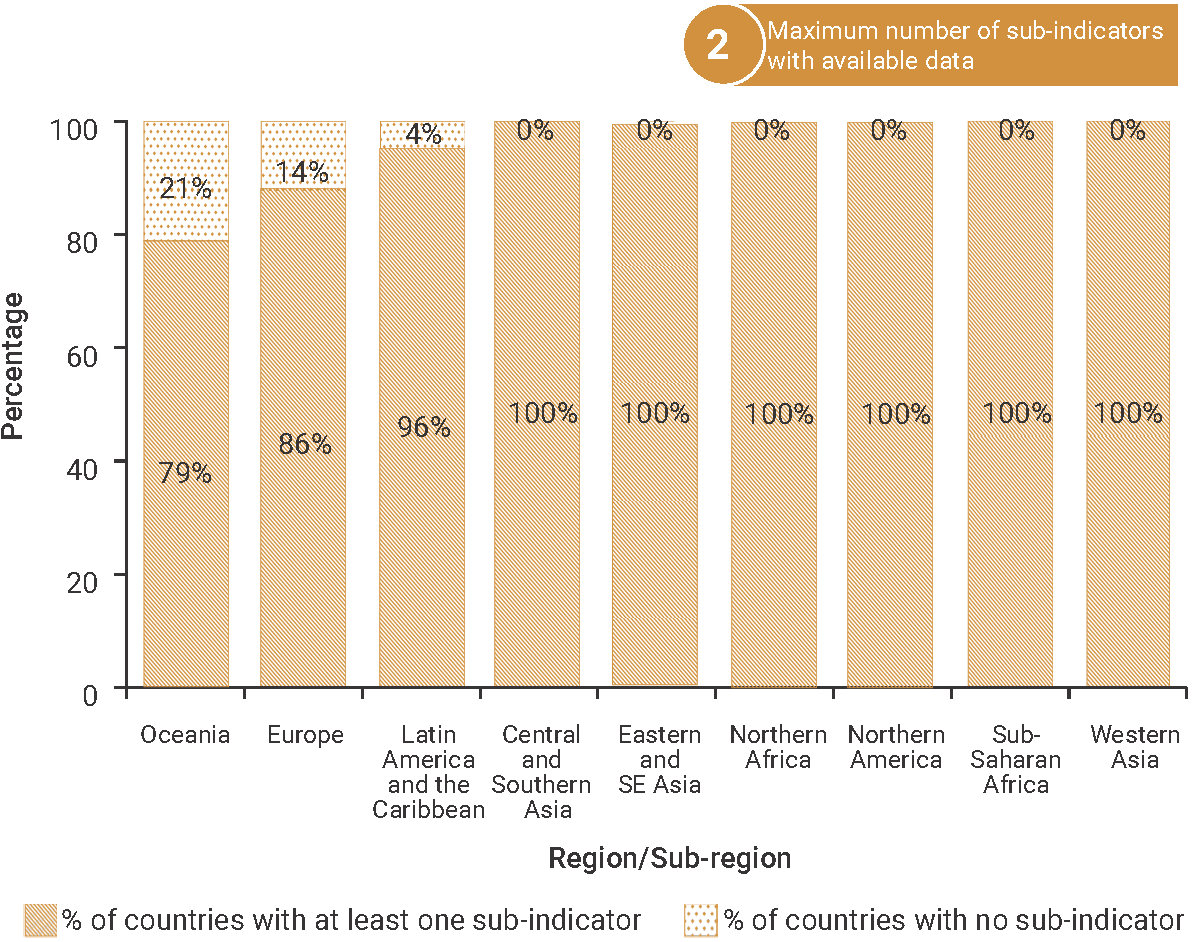SDG Indicator 12.3.1: (a) Food loss index and (b) food waste index
1. Key features and metadata (a and b)
Definitions:Indicator 12.3.1a: The Food Loss Index (FLI) measures losses along the food supply chain starting from post-harvest losses on the farm up to, but not including the retail stage.
Indicator 12.3.1b: The Food Waste Index (FWI) measures food waste at the retail and consumer level (households and food service).
| Sub-indicator | Disaggregated by |
|---|---|
|
AG_FLS_INDEX Global food loss index (2015= 100) |
No current data disaggregation available.
|
|
AG_FLS_PCT Food loss percentage (%) |
|
|
AG_FOOD_WST Food waste (tonnes) |
Food waste sector(retail, food service, household)
|
|
AG_FOOD_WST_PC Food waste per capita (KG per capita) |
Sources of information:National Statistical Offices, Statistical Units of the Ministry of Agriculture (through annual agricultural production questionnaires and surveys), other relevant national institutions, and modelled estimates for non-reporting countries.
Related SDG Indicators: 11.6.1 (Proportion of urban solid waste regularly collected and with adequate final discharge out of total urban solid waste generated, by cities) and 12.5.1 (National recycling rate, tonnes of material recycled).
2. Data availability by region, SDG Global Database, as of 02 July 2025
12.3.1a Food loss index
Data not available at country level.

3. Proposed disaggregation, links to policymaking and its impact
| Proposed disaggregation | Link to policymaking | Impact |
|---|---|---|
|
Disaggregation of the food loss percentage along the food supply chain, by food group (%)(FAO 2018):
Applies to:
|
The aim of this disaggregation is to track the FLI at the level of homogenous groups of commodities to identify where losses occur and design interventions to reduce these losses(FAO 2018).Such information is critical for decision-makers in identifying emerging trends and gaps and devise policy measures adapted to the specificity of each group along the food chain with a view to generating economic and/or social benefits. Addressing food loss requires policy frameworks and related investments in technologies, infrastructure, education, and awareness – informed by good quality data, which is still scarce(FAO 2019b). This disaggregation is consistent with the 10YFP(UNEP 2024c). |
Food losses have significant adverse social, economic and environmental impacts. Implementing policies that reduce food loss, whether by product or at any or all stages of the supply chain provides a variety of benefits. These include improving food security and nutrition, enhancing economic efficiency by lowering production costs and promoting environmental sustainability. |
|
Disaggregation of food loss percentage, by value chain stage (%)(FAO 2018):
Applies to:
|
This disaggregation includes all the value chain stages except the retail and consumption stages. It is relevant information for monitoring the development, adoption and implementation of policy put in place at a national level to reduce food loss and its impacts. The disaggregation points to the stages of the food value chain where efforts should be made to improve the overall effectiveness of the sector.This disaggregation is consistent with the 10YFP(UNEP 2024c). |
|
|
Food waste by edible and inedible parts (tonnes)(Nicholes et al. 2019) Applies to:
|
This disaggregation aims to distinguish the edible (wasted food) and associated inedible parts (e.g. bones, pits, or eggshells) of food waste, taking into consideration cultural differences in the parts of plants, fungi and animals that are consumed by the population(Nicholes et al. 2019).This is useful information for decision-makers to benefit from untapped opportunities related to waste reduction and to support effective food waste reduction strategies that generate significant benefits for food security, food chain profitability and the reduction of waste-related costs. This disaggregation is consistent with the 10YFP(UNEP 2024c). |
Reducing food waste that particularly affects highly perishable foods (like animal products, fruits and vegetables) generates multiple opportunities – notably in relation to food security – by offering new food resources to the people. There are sufficient volumes of edible parts of food waste, especially in lower income countries facing food security problems, to develop circular approaches which can contribute simultaneously to poverty and hunger reduction(FAO 2019b). |

